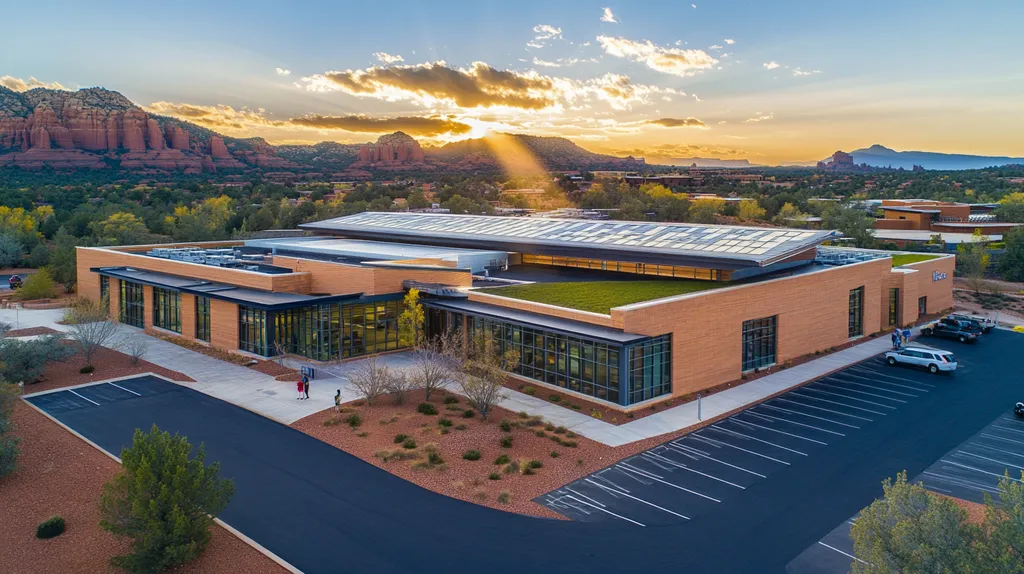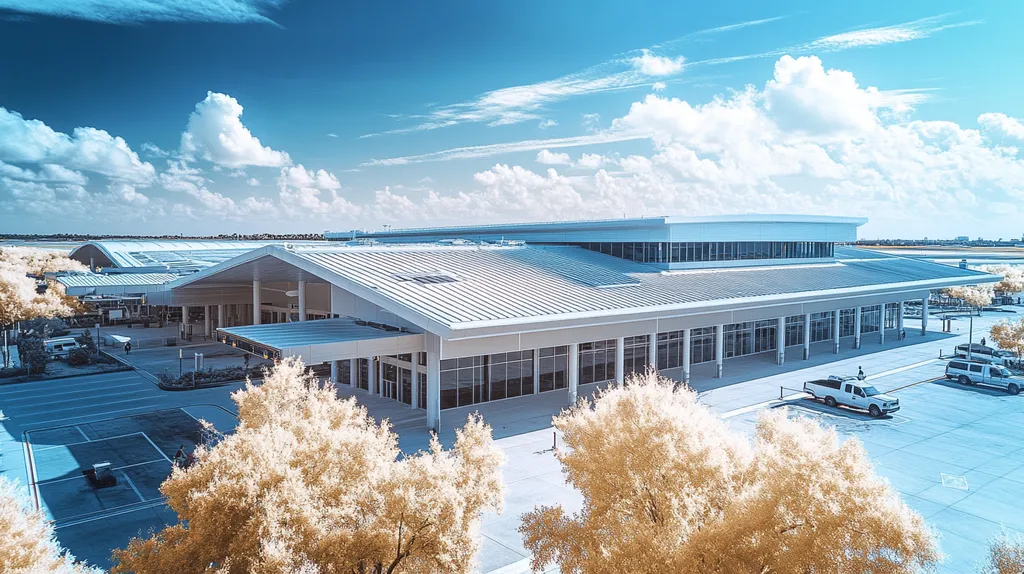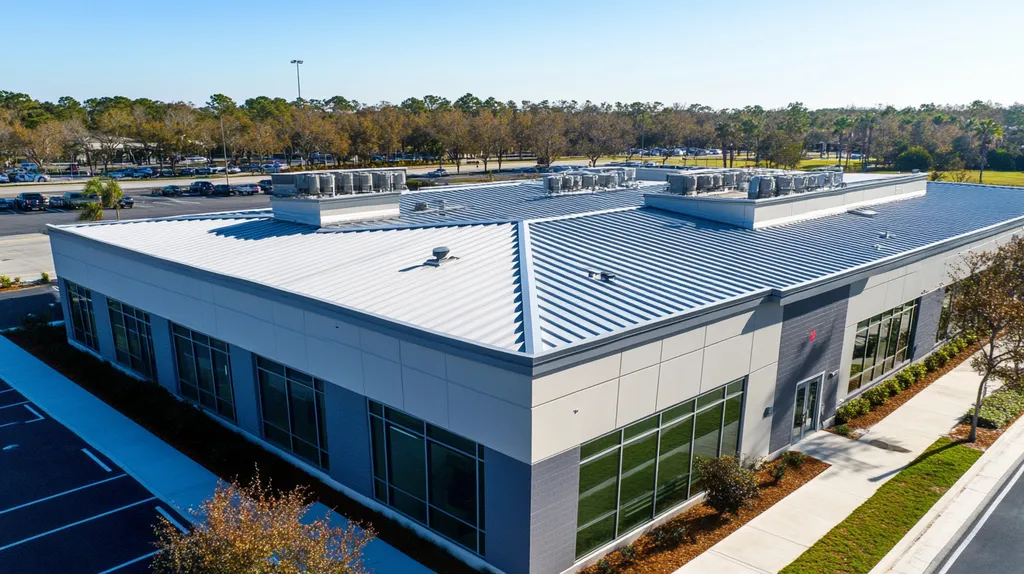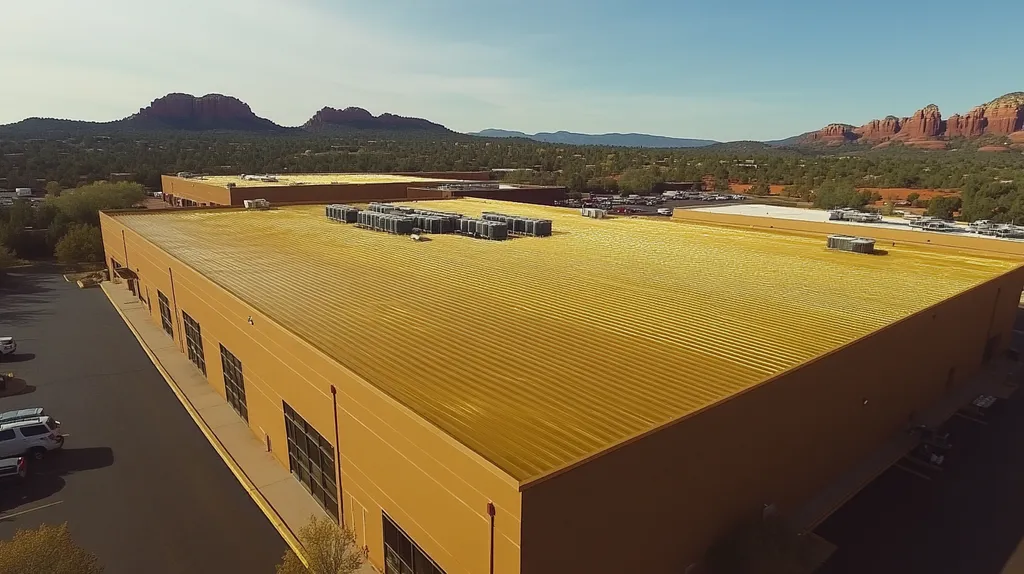Poor documentation practices cost commercial property owners millions each year in preventable roof failures and voided warranties. Industry studies show that facilities lacking proper documentation systems experience up to 40% higher maintenance costs over their roof’s lifespan.
From basic inspection records to advanced performance metrics, comprehensive documentation forms the foundation of effective roof management. Yet 70% of commercial properties lack the systematic documentation needed to optimize maintenance and protect their roofing investments.
This guide provides a complete framework for implementing professional documentation practices across all aspects of commercial roof maintenance and management.
SECTION 1: FUNDAMENTAL CONCEPTS
Every commercial roof represents a significant capital investment that demands careful documentation throughout its lifecycle. Studies show that poorly documented roofs cost property owners up to 25% more in maintenance and repairs over their lifespan. Without proper documentation, facility managers struggle to make informed decisions about maintenance, repairs, and replacement timing – leading to premature roof failure and unnecessary expenses.
Importance of Detailed Roof Documentation
Comprehensive roof documentation serves as the foundation for effective asset management and maintenance planning. A complete documentation package tracks the roof’s history from installation through every inspection, repair, and modification.
This historical record enables facility managers to identify patterns of wear, recurring problem areas, and the effectiveness of previous repairs. When issues arise, documentation provides crucial context for diagnosing problems and developing targeted solutions.
Documentation also preserves institutional knowledge as facility personnel change over time. Without proper records, valuable information about roof conditions and past interventions is lost with each staff transition.
Legal and Insurance Considerations in Documentation
Roof documentation plays a critical role in protecting warranty coverage and insurance claims. Most manufacturer warranties require proof of regular maintenance and timely repairs – without proper documentation, owners risk voiding these valuable protections.
Complete documentation also strengthens an owner’s position during insurance claims. Detailed maintenance records demonstrate proper care of the asset and help justify claim amounts when damage occurs.
Building code compliance depends heavily on accurate documentation. Records of permits, inspections, and repairs provide evidence of meeting regulatory requirements and help defend against potential liability claims.
Integration of Documentation with Asset Management
Effective roof management requires centralizing all documentation in an organized, accessible system. Roof drawings, warranties, inspection reports, repair records, photos, and correspondence should be compiled in one location for easy reference when needed.
This centralized approach facilitates coordination between facility managers, contractors, and consultants while enabling more strategic maintenance planning. Having complete documentation readily available helps teams make better decisions about timing and scope of work.
Digital documentation systems enhance accessibility and analysis capabilities. Modern platforms allow real-time updates, automated maintenance scheduling, and data-driven insights to optimize roof performance and longevity. (source: Benton Roofing)
SECTION 2: SYSTEM COMPONENTS
A commercial roof consists of multiple integrated components that must work together seamlessly to protect the building. Studies show that 90% of premature roof failures stem from inadequate documentation of these critical components. Understanding and tracking each element’s condition, maintenance history, and performance is essential for preventing costly failures and maximizing the roof’s service life.
Key Roof Assembly Elements to Document
The foundation of effective roof management starts with comprehensive documentation of the base assembly. This includes detailed specifications of the deck structure, vapor barriers, insulation layers, and the primary roofing membrane.
Documentation must capture the exact materials used, including manufacturer specifications, installation dates, and expected service life. This baseline information becomes critical when evaluating performance or planning repairs.
Regular monitoring should track signs of deterioration, such as membrane degradation, insulation compression, or deck deflection. Early detection through systematic documentation helps prevent cascading failures.
Tracking assembly performance over time reveals patterns that inform maintenance scheduling and budget planning. This proactive approach helps facility managers optimize repair timing and extend roof longevity.
Flashings, Sealants, and Penetrations Records
The most vulnerable points in any roofing system occur where different components intersect or penetrate the membrane. These transition areas require meticulous documentation to prevent water infiltration and maintain system integrity.
Each penetration, from HVAC units to plumbing vents, must be cataloged with precise location data and installation details. This information proves invaluable during inspections and troubleshooting.
Documentation should include the type and age of all sealants and flashings, along with their maintenance history. These components typically require replacement more frequently than the main roof membrane.
Tracking repair history at these critical points helps identify recurring problems that may indicate underlying design issues. This insight enables more effective long-term solutions rather than repeated temporary fixes.
Drainage Systems and Their Documentation Needs
A properly functioning drainage system forms the cornerstone of roof performance. Documentation must include detailed plans showing drain locations, flow patterns, and discharge points.
Records should track inspection dates, cleaning schedules, and any modifications to the original drainage design. Regular documentation of drain condition helps prevent catastrophic backups that can overload the roof structure.
Maintain detailed records including roof drawings, project records, product data, and roofing plans showing drains and rooftop equipment. Complete documentation facilitates effective maintenance planning and contractor coordination throughout the roof’s lifecycle.
Historical drainage performance data helps identify potential problem areas before they lead to serious issues. This information proves especially valuable during extreme weather events when drainage systems face their greatest challenges. (source: Benton Roofing)
SECTION 3: IMPLEMENTATION METHODS
Commercial roof maintenance requires systematic documentation to protect substantial property investments. Industry data shows that buildings lacking structured implementation methods experience 40% higher maintenance costs and significantly shorter roof lifespans. Proper protocols, technology integration, and organized storage systems form the foundation of effective roof management practices.
Structured Roof Inspection Protocols and Checklists
A regular roof inspection program must include systematic evaluation of roof covering, flashing, drains, pitch pans, lightning protection, and evidence of standing water. Semi-annual inspections plus additional checks following major storms provide optimal coverage for identifying potential issues.
Documentation of these inspections forms a critical component in maintaining roof integrity and reducing emergency repairs. Standardized checklists ensure consistent evaluation across all roof areas and components.
Each inspection should generate detailed reports noting specific conditions, measurements, and photographic evidence. This systematic approach creates a reliable record for tracking deterioration patterns and planning maintenance.
Inspection timing should align with seasonal challenges, with particular attention to drainage systems before heavy rain seasons and membrane integrity before extreme temperature periods. (source: Travelers Insurance)
Technology Tools for Accurate Data Collection
Digital inspection platforms streamline the documentation process through automated checklists and instant report generation. These tools ensure consistency across multiple inspectors while reducing human error in data collection.
Drone technology enables comprehensive aerial mapping of roof conditions, capturing high-resolution imagery for detailed analysis. This capability proves especially valuable for large commercial facilities where physical access may be challenging.
Mobile applications with GPS tagging help precisely locate and track problem areas over time. These solutions allow inspectors to mark specific points requiring attention and monitor their progression between visits.
Cloud-based documentation systems enable real-time updates and instant access for all stakeholders. This immediate availability of information facilitates faster response times to emerging issues.
Organizing and Storing Roof Documentation Effectively
Digital document management systems should categorize files by type, date, and urgency level. This organization enables quick retrieval of critical information during emergencies or routine maintenance planning.
Backup protocols must protect against data loss through redundant storage solutions. Regular system updates ensure continued accessibility of historical records throughout the roof’s lifecycle.
Access controls should restrict document modification rights while maintaining viewability for relevant personnel. This security measure preserves documentation integrity while facilitating information sharing.
Integration with facility management software enables automated maintenance scheduling and budget tracking. This coordination helps optimize resource allocation and maintain warranty compliance.
SECTION 4: MAINTENANCE REQUIREMENTS
Regular maintenance of commercial roofs represents a critical investment protection strategy. Industry data shows that 70% of all commercial roof failures stem directly from inadequate maintenance practices and documentation. Without proper maintenance protocols, even the highest quality roofing systems will fail prematurely, leading to expensive repairs and potential structural damage. Understanding and implementing proper maintenance requirements helps facility managers protect their roofing assets and extend service life.
Scheduling and Recording Routine Inspections
A systematic inspection schedule forms the foundation of effective roof maintenance. Semi-annual inspections should occur in spring and fall, with additional assessments following severe weather events or nearby construction activity.
Every inspection must thoroughly evaluate the supporting structure, roof covering, flashings, drainage systems, and areas of potential water ponding. Detailed documentation of these findings creates a historical record for tracking deterioration patterns.
Digital inspection platforms streamline the documentation process while ensuring consistency across multiple evaluations. These tools enable precise tracking of problem areas and automated scheduling of follow-up assessments.
Professional inspectors should document all findings with photographs, measurements, and specific observations about material conditions. This systematic approach to inspection documentation helps identify emerging issues before they become major problems.
Documentation of Repairs and Preventive Maintenance
Comprehensive documentation of all repair work creates an invaluable historical record of roof interventions. Each repair entry should detail the specific problem, solution implemented, materials used, and associated costs.
Preventive maintenance activities require equally thorough documentation. Records should track routine tasks like drain cleaning, debris removal, and membrane conditioning to demonstrate ongoing care of the roofing system.
Documentation must capture both the scope and timing of all maintenance activities. This information helps facility managers optimize maintenance schedules and justify budget allocations for preventive care.
Maintaining detailed repair records strengthens warranty claims and demonstrates proper asset stewardship. These documents become particularly valuable during property transactions or insurance claims.
Accountability and Reporting Roles in Maintenance
Clear assignment of maintenance responsibilities ensures consistent execution of required tasks. Facility managers should establish specific roles for inspection scheduling, documentation management, and maintenance oversight.
Regular maintenance reporting keeps stakeholders informed about roof conditions and upcoming needs. Monthly or quarterly updates should summarize completed work, identified issues, and recommended actions.
A systematic inspection program must include supporting structures, roof covering, flashing, drains, and evidence of ponding. This comprehensive approach helps identify potential problems before they lead to significant damage or failure. (source: Travelers Insurance)
Documentation protocols should establish clear chains of responsibility for maintaining records and implementing recommended repairs. This accountability structure helps ensure that identified issues receive prompt attention and proper documentation.
SECTION 5: PERFORMANCE METRICS
Performance metrics form the cornerstone of effective commercial roof management, directly impacting both maintenance costs and system longevity. Studies show that roofs monitored through comprehensive metrics typically last 30-40% longer than those without systematic tracking. Yet 65% of commercial properties lack proper performance measurement protocols, leading to premature failures and unexpected capital expenditures.
Tracking Roof Condition Over Time Through Documentation
Systematic documentation of roof conditions enables facility managers to identify deterioration patterns before they become critical issues. Each inspection should establish clear baseline measurements for membrane integrity, drainage efficiency, and structural stability.
Regular photographic documentation creates a visual timeline of changes in roof condition. These images, combined with detailed notes, help track the progression of wear patterns and highlight areas requiring increased monitoring.
Performance data should include measurements of membrane thickness, seam integrity, and surface degradation. This quantitative approach removes subjectivity from condition assessments while enabling trend analysis.
Documentation must capture environmental factors affecting roof performance, including exposure to chemicals, foot traffic patterns, and equipment maintenance activities. These contextual details prove invaluable when evaluating system longevity and planning interventions.
Using Moisture Surveys and Thermal Imaging Results
Advanced moisture detection and thermal imaging provide crucial early warning of developing roof issues. These technologies can identify subsurface moisture infiltration months before visible damage appears.
Moisture survey results should be mapped and tracked over time to identify migration patterns within the roof assembly. Understanding these patterns helps target repairs more effectively while preventing widespread damage.
Thermal imaging scans detect temperature variations that indicate insulation deterioration or moisture accumulation. Regular scanning creates a thermal profile of the roof that highlights developing problem areas.
Results from both technologies should be documented with precise location data and severity ratings. This systematic approach enables year-over-year comparisons and helps prioritize maintenance interventions.
Benchmarking Against Industry Standards and Warranty Terms
Regular inspections should be documented systematically, tracking roof covering condition, flashing, roof drains, evidence of ponding, and other critical elements. This data establishes clear performance benchmarks that align with warranty requirements and industry best practices.
Performance metrics must be evaluated against manufacturer specifications and warranty terms to ensure compliance. Deviations from these standards should trigger immediate investigation and corrective action.
Documentation should demonstrate adherence to specified maintenance intervals and procedures. This record-keeping proves essential when warranty claims arise or during insurance investigations.
Benchmark data helps facility managers optimize maintenance timing and defend budget requests. Comparing actual performance against industry standards identifies opportunities for improvement while justifying necessary expenditures. (source: Travelers Insurance)
SECTION 6: OPTIMIZATION STRATEGIES
In the competitive realm of commercial real estate, efficient roof management is crucial. A staggering 60% of roofing failures can be traced back to inadequate documentation and maintenance planning. By leveraging structured documentation, property owners and facility managers can transform their roofing strategies from reactive to proactive, optimizing performance and prolonging lifespan. This section explores how to use documentation for predictive maintenance, enhance roof longevity through data-driven decisions, and ensure compliance while maximizing warranty benefits.
Leveraging Documentation for Predictive Maintenance
Predictive maintenance minimizes costly repairs by anticipating problems before they arise. Regular inspections form the foundation of effective maintenance, with scheduled quarterly or biannual assessments helping identify potential issues early in their development.
By analyzing historical data, roofing inspections can be scheduled right before expected adverse weather, preventing major damage. Keeping accurate records of past repairs and inspection outcomes helps pinpoint recurring issues, enabling managers to allocate resources efficiently.
Preventive maintenance tasks, including minor repairs, protective coatings, and roof cleaning, extend system life by preventing material decay caused by debris and moisture accumulation. Systematic documentation of these activities supports effective contract management and compliance verification.
The strategic use of documentation serves as a blueprint for efficient roof management, extending the roof’s life and ensuring tenant satisfaction. (source: Blue Team Corporation)
Enhancing Roof Longevity Through Data-Driven Decisions
Data-driven decisions can significantly enhance the longevity of a commercial roof. Regular documentation of roof conditions, including photographs and inspection reports, informs better strategic choices regarding maintenance and repairs.
Performance data might reveal that certain materials resist wear better than others in specific climates. This information allows property owners to implement timely upgrades or apply protective coatings that can prolong roof life.
Regularly scheduled roof assessments, combined with detailed documentation, allow for the immediate identification of wear-and-tear signs. These issues can be addressed promptly before they escalate into expensive repairs.
Implementing a systematic documentation approach enables facilities managers to create trend analyses. This highlights when a roof is most susceptible to damage, leading to preemptive actions that could save significant costs over time.
Ensuring Compliance and Maximizing Warranty Benefits
Compliance with manufacturer requirements is essential to maintaining warranty validity. Documenting all maintenance tasks performed on a roof ensures that property owners can present proof of adherence to warranty conditions.
Building owners who lack proper documentation risk losing significant warranty coverage due to non-compliance. For example, if a roof warranty mandates semi-annual inspections, missing these could invalidate the warranty when a failure occurs.
Understanding local regulations and ensuring compliance through meticulous record-keeping helps avoid costly fines and penalties. Comprehensive documentation of inspections, repairs, and modifications provides a roadmap for audits and assessments.
Effective documentation not only acts as a shield against potential liabilities but also enhances the value of the property through documented care and compliance.
The Bottom Line
With 70% of commercial roofs failing prematurely due to poor documentation practices, the stakes couldn’t be higher for property owners and facility managers.
Comprehensive documentation serves as the foundation for protecting these valuable assets, with studies showing properly documented roofs lasting 30-40% longer than those without systematic records.
From basic inspection protocols to advanced performance metrics, every aspect of roof management depends on accurate, accessible documentation.
By implementing the structured documentation practices outlined in this guide, facility managers can reduce lifetime maintenance costs by up to 40% while ensuring maximum warranty protection and regulatory compliance.
The future of commercial roof management lies in data-driven decision making, powered by systematic documentation that transforms reactive maintenance into strategic asset protection.
FREQUENTLY ASKED QUESTIONS
Q. Why is documentation essential for a commercial roof?
A. Proper documentation helps track the roof’s history, preventing costly issues and providing context for maintenance. It preserves valuable information that supports informed decision-making and extends the roof’s lifespan.
Q. What key components of a commercial roof need documentation?
A. Documenting the base assembly, flashings, penetrations, and drainage systems is essential. Each aspect’s condition, maintenance history, and associated materials should be tracked to prevent failures and maximize service life.
Q. How can I implement effective documentation methods for my commercial roof?
A. Establish structured inspection protocols and utilize digital tools for accurate data collection. Organized storage systems help streamline access, ensuring proper documentation is consistently maintained and easily retrievable.
Q. How often should I maintain my commercial roof?
A. Routine maintenance should include semi-annual inspections and additional checks after storms. A schedule ensures that potential problems are identified early, significantly reducing long-term repair costs and enhancing roof durability.
Q. What performance metrics should I track for my commercial roof?
A. Track metrics like membrane condition, drainage efficiency, and structural stability. Consistent documentation of these factors allows for better maintenance planning and identifies deterioration trends before they escalate into major issues.
Q. How does documentation affect warranty claims for a commercial roof?
A. Documentation establishes proof of compliance with maintenance requirements, ensuring warranty validity. Inadequate records can jeopardize warranty coverage, leaving owners vulnerable to costly repairs during a roof failure.
Q. What best practices can I follow to ensure roof documentation is effective?
A. Regularly review and update documentation, utilize digital tools for easy access, and ensure clear roles for staff involved in maintenance. This practice can significantly enhance the reliability and usability of the documentation over time.










